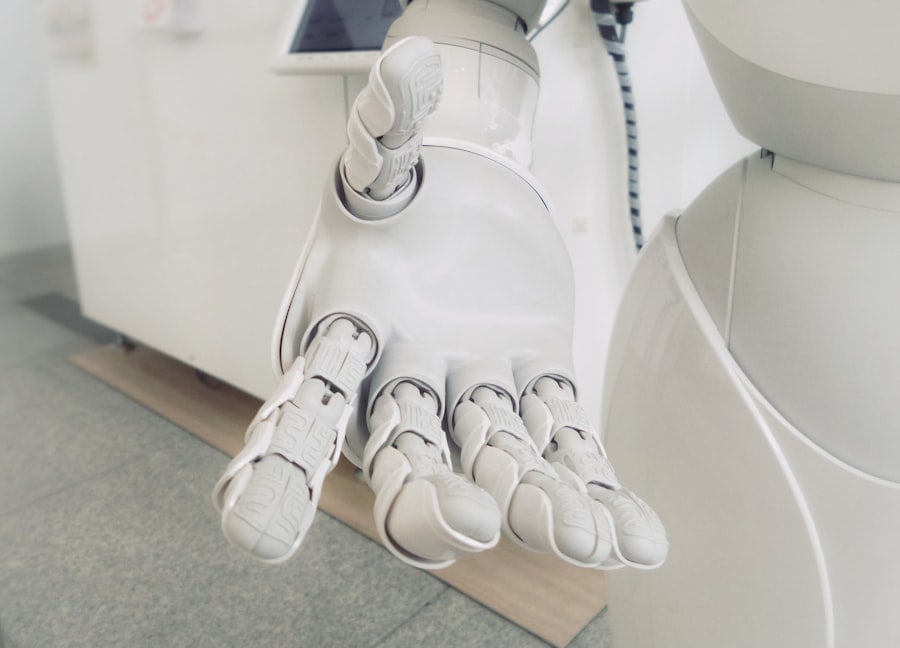Supervised learning is a machine learning technique that uses labeled datasets to train algorithms. In this approach, input data is paired with corresponding correct outputs. The primary objective is to develop a model that can accurately map inputs to outputs, enabling predictions on new, unseen data.
During the training process, the algorithm learns from a set of input-output examples, generalizing this knowledge to make predictions on novel data. The term “supervised” refers to the guidance provided by the correct answers during the learning phase. This method finds widespread application in various fields, including image and speech recognition, natural language processing, and numerous other domains.
Supervised learning is particularly valuable for addressing complex problems where explicit programming of solutions is challenging. By exposing the algorithm to labeled data, it can identify patterns and make predictions based on these learned patterns. Supervised learning algorithms are typically classified into two main categories: regression and classification.
Regression algorithms are employed to predict continuous numerical values, while classification algorithms are used to predict discrete categorical outcomes. Both types of algorithms play crucial roles in different applications, depending on the nature of the problem and the desired output.
Key Takeaways
- Supervised learning involves training a model on labeled data to make predictions or decisions.
- AI is the simulation of human intelligence processes by machines, while machine learning is a subset of AI that uses algorithms to learn from data.
- Types of supervised learning algorithms include regression, classification, and ensemble methods.
- Data preprocessing involves cleaning, transforming, and engineering features to improve model performance.
- Model selection and evaluation are crucial steps in supervised learning to ensure the best performing model is chosen for the task at hand.
- Overfitting occurs when a model performs well on training data but poorly on unseen data, while underfitting occurs when a model is too simple to capture the underlying patterns in the data.
- Practical applications of supervised learning in AI include image and speech recognition, recommendation systems, and fraud detection.
Introduction to AI and Machine Learning
Artificial Intelligence (AI) is a broad field that encompasses the development of intelligent machines that can perform tasks that typically require human intelligence. Machine learning is a subset of AI that focuses on developing algorithms that can learn from data and make predictions or decisions. Machine learning algorithms can be categorized into three main types: supervised learning, unsupervised learning, and reinforcement learning.
Supervised learning, as mentioned earlier, involves training the algorithm on labeled data, while unsupervised learning involves training the algorithm on unlabeled data to discover patterns and relationships. Reinforcement learning involves training an agent to make sequential decisions in an environment in order to maximize a reward. Machine learning has become increasingly popular in recent years due to the availability of large datasets and powerful computational resources.
It has been applied to a wide range of domains including healthcare, finance, marketing, and more. The ability of machine learning algorithms to learn from data and make predictions has led to significant advancements in various fields, making it an essential tool for solving complex problems.
Types of Supervised Learning Algorithms

Supervised learning algorithms can be further categorized into different types based on the nature of the output variable. The two main types of supervised learning algorithms are regression and classification. Regression algorithms are used when the output variable is continuous, meaning that it can take any value within a certain range.
These algorithms are used to predict quantities such as stock prices, temperature, or sales figures. Some common regression algorithms include linear regression, polynomial regression, and support vector regression. On the other hand, classification algorithms are used when the output variable is discrete, meaning that it can take on a limited number of values.
These algorithms are used to classify data into different categories or classes. For example, they can be used to classify emails as spam or not spam, or to classify images as cats or dogs. Some common classification algorithms include logistic regression, decision trees, random forests, and support vector machines.
Each type of algorithm has its own strengths and weaknesses, and the choice of algorithm depends on the nature of the problem and the characteristics of the data.
Data Preprocessing and Feature Engineering
| Metrics | Value |
|---|---|
| Missing Values | 10% |
| Outliers | 5% |
| Feature Scaling | Min-Max Scaling |
| Feature Encoding | One-Hot Encoding |
Data preprocessing and feature engineering are crucial steps in the supervised learning process. Data preprocessing involves cleaning and transforming the raw data into a format that is suitable for training a machine learning model. This may involve handling missing values, scaling the features, encoding categorical variables, and splitting the data into training and testing sets.
Feature engineering involves creating new features from the existing ones in order to improve the performance of the model. This may involve creating interaction terms, polynomial features, or transforming the features using mathematical functions. Data preprocessing and feature engineering are important because they can have a significant impact on the performance of the model.
By cleaning and transforming the data, we can ensure that the model is trained on high-quality data, which can lead to better predictions on new data. Feature engineering allows us to extract more information from the data and create new features that may be more informative for the model. These steps require careful consideration and domain knowledge in order to make informed decisions about how to preprocess the data and engineer new features.
Model Selection and Evaluation
Model selection and evaluation are critical steps in the supervised learning process as they determine the performance of the trained model. Model selection involves choosing the appropriate algorithm and its hyperparameters for a given problem. This may involve trying out different algorithms and tuning their hyperparameters in order to find the best performing model.
Model evaluation involves assessing the performance of the trained model on new, unseen data using various metrics such as accuracy, precision, recall, F1 score, and others. Model selection and evaluation are important because they allow us to choose the best model for a given problem and assess its performance in a meaningful way. By comparing different models and evaluating their performance using appropriate metrics, we can make informed decisions about which model to use for making predictions on new data.
This requires careful experimentation and validation in order to ensure that the selected model performs well across different datasets and generalizes well to new data.
Overfitting and Underfitting

Overfitting and underfitting are common problems in supervised learning that can affect the performance of a trained model. Overfitting occurs when a model learns to memorize the training data instead of generalizing from it, leading to poor performance on new data. This often happens when the model is too complex relative to the amount of training data available.
Underfitting occurs when a model is too simple to capture the underlying patterns in the data, leading to poor performance on both training and new data. Overfitting and underfitting are important concepts to understand because they can have a significant impact on the performance of a trained model. Overfitting can be mitigated by using techniques such as regularization, cross-validation, and early stopping, while underfitting can be addressed by using more complex models or adding more features to the data.
By understanding these concepts, we can make informed decisions about how to train models that generalize well to new data while avoiding overfitting or underfitting.
Practical Applications of Supervised Learning in AI
Supervised learning has numerous practical applications in AI across various domains. In healthcare, it can be used for diagnosing diseases based on medical images or patient records. In finance, it can be used for predicting stock prices or detecting fraudulent transactions.
In marketing, it can be used for customer segmentation or predicting customer churn. In natural language processing, it can be used for sentiment analysis or language translation. These applications demonstrate the versatility of supervised learning in solving real-world problems by making predictions based on historical data.
By training models on labeled data, we can leverage the power of machine learning to automate tasks that would otherwise require human intervention. This has led to significant advancements in various fields and has made supervised learning an essential tool for building intelligent systems that can make accurate predictions based on data. In conclusion, supervised learning is a powerful tool for solving complex problems by training machine learning models on labeled data in order to make predictions on new, unseen data.
It has become increasingly popular due to its wide range of applications across various domains and its ability to learn from data and make accurate predictions. By understanding the different types of supervised learning algorithms, as well as concepts such as data preprocessing, feature engineering, model selection and evaluation, overfitting and underfitting, we can leverage supervised learning to build intelligent systems that can automate tasks and make accurate predictions based on historical data.
If you’re interested in exploring the potential of artificial intelligence in the digital realm, you may want to check out this article on exploring the metaverse: a new frontier in digital reality. It delves into the concept of the metaverse and how it could revolutionize the way we interact with AI and other technologies. This could be particularly relevant to those interested in supervised learning, as it offers a glimpse into the future of digital experiences and the role AI could play in shaping them.
FAQs
What is supervised learning?
Supervised learning is a type of machine learning where the algorithm is trained on a labeled dataset, meaning that the input data is paired with the correct output. The algorithm learns to make predictions or decisions based on the input data.
How does supervised learning work?
In supervised learning, the algorithm is trained on a labeled dataset, where the input data is paired with the correct output. The algorithm learns to map the input data to the correct output by finding patterns and relationships in the data.
What are some common algorithms used in supervised learning?
Some common algorithms used in supervised learning include linear regression, logistic regression, decision trees, random forests, support vector machines, and neural networks.
What are some applications of supervised learning?
Supervised learning is used in a wide range of applications, including image and speech recognition, natural language processing, recommendation systems, and predictive modeling in various industries such as finance, healthcare, and marketing.
What are the advantages of supervised learning?
Some advantages of supervised learning include the ability to make accurate predictions, the ability to handle complex tasks, and the ability to generalize to new, unseen data.
What are the limitations of supervised learning?
Some limitations of supervised learning include the need for labeled data, the potential for overfitting, and the inability to handle unknown or unexpected inputs.











Leave a Reply